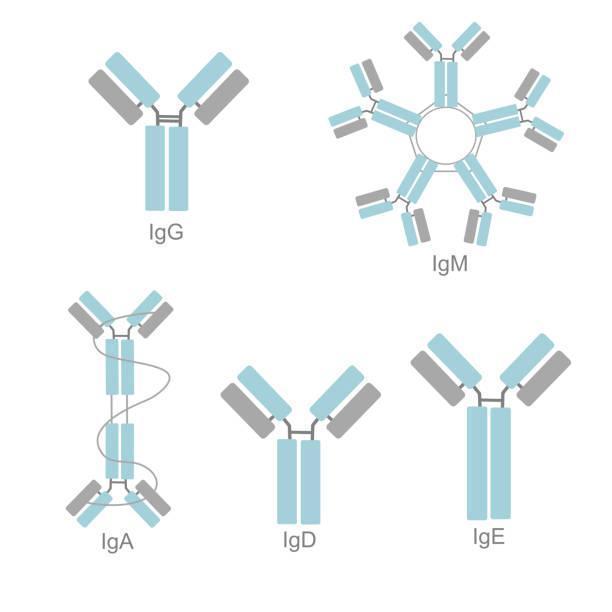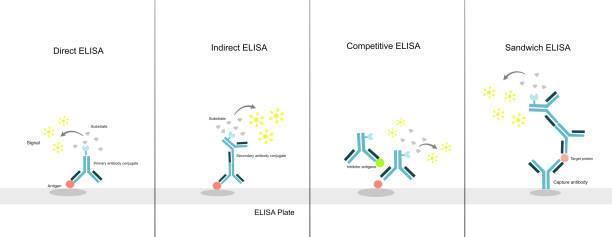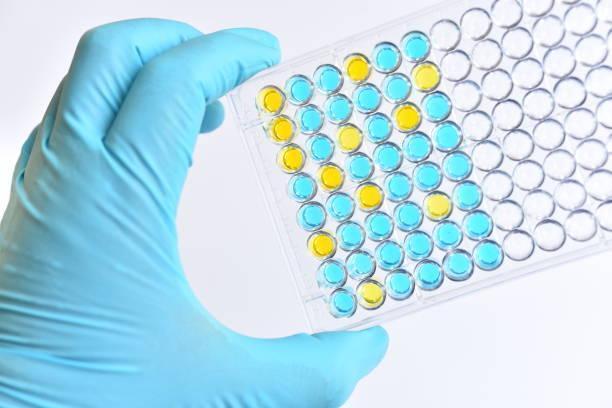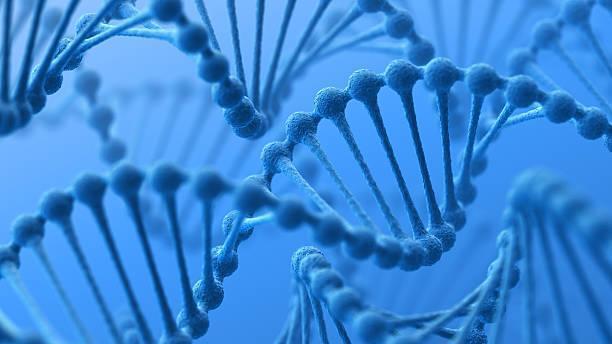What Are the Basic ELISA Concepts and Test Types?
Nov 17th 2022
The ELISA test is one of the most reliable antibody detection tests. Today, it has been critical for diagnosis and other laboratory experiments for ages and is a reliable test due to its modifications and diversity. The enzyme-linked immunosorbent assay (ELISA) test is conducted to identify and measure hormones, peptides, and proteins in the blood sample.
For it to be reliable, there is a need to have essential protein production services which are necessary to produce the needed samples, enzymes, antibodies, antigens, etc. These proteins are required for the result conformation and can be produced on a small or large scale depending on the experimentation and diagnostic needs. To have accurate results, you should have customized proteins, follow different procedures, and abide by the existing principles.

Basic principles of the ELISA test
The test's success will depend on the ability to follow different procedures effectively and abide by the principles.
The first principle is immobilizing the antigen on the suitable solid surface. You can capture an already immobilized antibody or immobilize it directly, then put it on the surface. To boost the results, consider using a well plate for the ideal results. Regardless of the magnitude of the experiment, always use specific antibodies to bind the antigen and detect the quantity and presence of the antigen or antibody you are binding.
Ensure the plate you are using is coated with an antibody of high affinity. This boosts the quality and enables you to measure the antibody-antigen concentration accurately. You must also follow the clear procedures provided below:
First, attach the antibody to a plate, probably a polystyrene plate, which has a high attraction and affinity towards the bacteria.
Fill a microtiter with the antibody-antigen mixture, then wash away the free and unbound antibodies. Add the secondary antibody to the primary mixture and ensure the secondary antibody used is specific and conjugated with an enzyme.
Wash or remove any free secondary antibodies from the plate. The final process is to add a substrate to the mixture. The process tends to be universal but may sometimes change based on the nature of the test and the desired results; however, it is essential and applicable to all types of ELISA tests.
Test Types
There are different types of ELISA tests you can conduct, and here are some of them:

Direct Elisa Test
In this type of test, the tests only use primary antibody-labeled enzymes, meaning there is no need for secondary enzymes and antibodies. The enzyme is subjected to the plate and then reacted with the substrates to produce the desired visible signals. In this type, only the primary and desired antigen is tested. The process is one of the fastest and simplest protocols and tests. However, it is too simple since you are only one antibody. There can also be a higher potential high background, so all the proteins from the sample are immobilized.
Indirect Elisa test
This method is advantageous since the tests can enable you to determine the enzyme quantity qualitatively. Begin by coating the enzymes with a micrometer, then add other samples containing the primary antibody to react with the coated antigen. Next, add the secondary antibodies, which should be specified based on the desired results. Using the wrong secondary antibodies may give you wrong results, or the results may not be conclusive and unquantifiable.
Whenever you do the indirect ELISA test, there are procedures you must follow to guarantee positive results. Some of these procedures will dictate the temperature regulations, the antibodies used, and other critical processes to guarantee the quality of desired results.
The results from indirect tests are usually high and more favorable due to the use of multiple antigens. Researchers prefer the indirect test due to the flexibility and versatility since you can use different types of primary antibodies, and there are also other types of secondary antibodies you can use for the tests. However, success depends on keenly following the steps; sometimes, they can be lengthy and complicated.
Sandwich ELISA test
Like the indirect test, the first process is coating the antibody in a microtiter and then adding different antigens from the antigen-antibody complex to the well. The following procedure is to wash the well and then add the secondary and specific enzyme-linked antibodies. You also washed the unbound secondary antibodies. After washing the unbound antibodies, add a substrate to the plate to produce the colored enzymes, which can be easily detected.
The sandwich ELISA test is ideal for high-specificity tests since different antibodies and antigens can be used. If you are doing complex tests, the sandwich test is a better selection if you are doing complex tests since the antigen requires no complex purification process before measurements. A shorter purification process enables you to save time and not compromise the sample quality; you can use it as raw as it is. The process is also flexible due to the range of antibodies, antigens, and samples you can use for the test. However, you should keenly follow the procedures lest you get unreliable results.
Competitive ELISA Test
This test is ideal if you need to measure antigen concentration in a sample. First, you must incubate the antibody in a solution containing the sample antigen. Follow the first process by adding the antigen-antibody complex to a microtiter which must also be coated with an antigen. You need to balance the levels and amounts of antigen available since the more the antigen, the fewer free antibodies will be available. Wash them well, then add secondary-specific antibodies, but you must observe the amount added to avoid affecting the absorption process.
It is suitable for complex samples and is preferred for samples and reactions that require high specificity by using two antibodies. It is also ideal for high-sensitivity tests. One can choose the direct or indirect approach to it.
Types of ELISA kits
- HMGB1 Elisa Kits: These kits are ideal for identifying human HMGB-1 protein in a sample. The proteins are significant for cell differentiation, inflammation, and the migration of tumor cells. They are mainly used for human clinical diagnosis.
- Cytokine Elisa Kit: The kits are used by researchers to accurately measure the levels of cytokines in biological samples such as urine, plasma, serum, and other tissues. The measurements can provide insights into changes associated with various conditions and diseases.
- Lam Elisa kits: The kits are used for vitro quantitative measurement of Lipoarabinomannan concentrations in cells and biological fluids.
- TNF Alpha Elisa kits : It helps in the quantification of Hu TNF, which is a human serum, plasma, and cell culture medium. It can measure the target amount bound between a matched antibody pair.
- Cell based Eloisa kits: The kits target antigen in Vitro tests and efficiently detect changes in the specific protein.
- TS Elisa kits: They are used for the immunodetection of TS proteins in different animal and human species.
What diseases can you diagnose using the ELISA test
The test is meant to identify the presence of certain viruses, fungi, or bacteria in blood or any sample present. Hence it is ideal for diagnosing different conditions such as AIDS, Ebola, Anemia, Zika Virus, Covid-19, Syphilis, and many more.
The success of the ELISA test depends on the availability of enzymes, antibodies, antigens, and other samples needed for the test. These samples cannot all be collected naturally hence the need for protein synthesis.

What is Protein synthesis?
Protein synthesis refers to producing different types of proteins based on the gene and DNA functionality. The process regenerates cells from existing genetic functions to produce the desired proteins for experimentation.
The first step is the transcription which involves extracting the information from DNA and then copying it to an RNA molecule. After transcription, the following process is translation involving subjecting the molecules to the cytoplasm, which is necessary for synthesizing and bringing the combined molecules together. During the translation, the polymers are synthesized through a chemical reaction leading to the production of the nucleus and other components, such as ribosomes and other proteins, the transfer RNA (tRNA). In the final stage, elongation, the tRNA combines with mRNA, and the two bind together to produce the desired protein.
Benefits of Protein production services
When in need of antigens for secondary purposes in ELISA tests, the best source is to get them to form the protein synthesis services. The protein expression methods are suited for protein production and target other activities, such as drug production. Processes such as recombinant protein production are critical for various activities in the medical and biological fields to boost global diagnostic, vaccine, and drug development.
The process has also revolutionized biological processes by simplifying antigen and antibody production that cannot be accomplished through natural processes. If you need specific antibodies or antigens, you can easily order customized ones to meet your needs. Protein production labs use different machines to meet all production and customization needs, whether for bulk or limited production.
Protein synthesis services
There are different services available and offered by protein production services. The services depend on experimentation and the desired benefits. Here are some protein synthesis services
Gene synthesis services
Gene synthesis can also be referred to as DNA synthesis services. It involves the process of customizing genes based on the sequencing and genes that need cloning. Scientists can rely on these services due to their cost-effectiveness, higher accuracy, and ability to customize the genes to meet the study and experimental needs. Gene synthesis and production services are critical for antibody production and are supported by more robust codon optimization, antibody development, and recombinant protein production services.
There is no need for a base template since the process relies on different algorithms to optimize codon usage and expression services to ensure 100% sequencing accuracy. The success and reliability of the produced genes will depend on the technique used; hence you should rely on laboratory services that use DE Novo gene synthesis technologies.
Peptide synthesis services
Peptide synthesis is critical for producing peptides for preparing epitope-specific antibodies for the secondary antibodies used for ELISA kitsor during Elista tests. These peptides can also be used for enzyme, vaccine, and drug production.
The labs create a bond between two amino acids at the initial stage to form the amino or peptide bond. After the bonding, the next process is peptide deprotection, followed by amino acid coupling, then peptide cleavage, synthesis, and purification. Each process can be modified and customized based on the samples and anticipated results.
The bonds vary depending on the base amino used and what is targeted. For instance, the peptide bonds needed to produce insulin enzymes are entirely different from those required to produce oxytocin enzymes. Therefore, scientists can rely on these production services to create enzymes for different scientific studies and test various drug reagents and interactions.

Antibody production services
The antibody production services can either be monoclonal or polyclonal. A series of services are involved, such as bulk production, purification, optimization, and conjugation of antibodies.
Monoclonal antibody production services are of two types: in-vitro antibody production and ascites monoclonal antibody production. These two processes vary based on the duration since the in-vitro will take about 4 to 6 weeks to complete, while the Ascites will take 6 to 8 weeks. The in-vitro assay is one of the simplest methods and can be accomplished easily in scientific laboratories.
The ascites production process involves the production of a greater concentration of antibodies; hence it requires the use of special machines and processes. If you need custom antibody production services for target-specific experimentations, Ascites is the ideal process.
Polyclonal antibody production services are suitable for producing custom antibodies in animals such as rats, rabbits, and other SPF animals. The main objective of polyclonal production is to achieve antigen design, peptide synthesis, and animal immunization using high-quality antibodies from specific animals. Moreover, the process is mainly tech-dominated and is suitable for large-scale antibody production services. Antibiotics are ideal for experimentation and developing drugs and vaccines suitable for animals.
Conclusion
The success and dependency of an Elisa test depend on how accurately you follow the procedures, abide by the principles, and select the suitable secondary antigen for the antigen-antibody reaction. Otherwise, you can rely on it for tests, diagnoses, and other laboratory experiments. ELISA tests also largely depend on protein production services necessary to produce the enzymes, peptides, genes, and proteins needed as antibodies and antigens.

